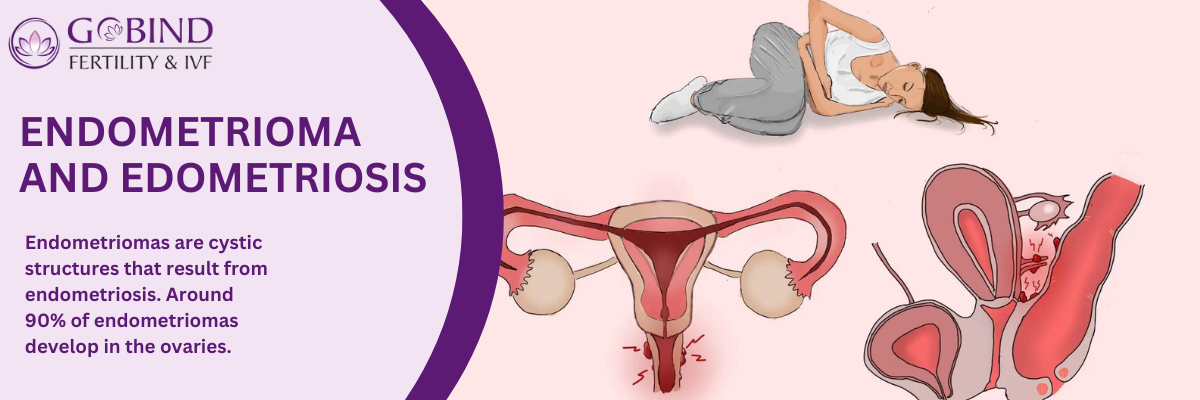

Endometriosis and Endometrioma
Endometriomas are cystic structures that result from endometriosis. Around 90% of endometriomas develop in the ovaries.
Endometriosis:
Endometriosis is defined as the presence of endometrial-like tissue (glands and stroma) outside the uterus, which induces a chronic inflammatory reaction, scar tissue, and adhesions that may distort a woman’s pelvic anatomy. Endometriosis is primarily found in young women, but its occurrence is not related to ethnic or social group distinctions. Patients with endometriosis mainly complain of pelvic pain, dysmenorrhea, and dyspareunia. The associated symptoms can impact the patient’s general physical, mental, and social well being. Endometriosis is a very common debilitating disease that occurs in 6 to 10% of the general female population; in women with pain, infertility, or both, the frequency is 35–50%. About 25 to 50% of infertile women have endometriosis, and 30 to 50% of women with endometriosis are infertile.
Symptoms:
Typically, endometriosis causes pain and infertility, although 20–25% of patients are asymptomatic. Other symptoms indicative of endometriosis include pain and a heavy feeling in the lumbo-sacral column and/or legs; nausea, lethargy, chronic fatigue; any cyclical pain affecting other organs; hemoptysis; scapular or thoracic pain; and acute abdomen.
Infertile women are 6 to 8 times more likely to have endometriosis than fertile women. Mechanism includes distorted pelvic anatomy, endocrine and ovulatory abnormalities, altered peritoneal function, and altered hormonal and cell-mediated functions in the endometrium.
Diagnosis:
On laparoscopy, pelvic anatomy distortion, the so-called “pelvic factor”, can more readily explain infertility in patients with severe forms of endometriosis. Major pelvic adhesions or peritubal adhesions that disturb the tubo-ovarian liaison and tube patency can impair oocyte release from the ovary, inhibit ovum pickup, or impede ovum transport.
Women with endometriosis may have endocrine and ovulatory disorders, including luteinized unruptured follicle syndrome, impaired folliculogenesis, luteal phase defect, and premature or multiple luteinizing hormone (LH) surges.
Treatments for endometriosis and infertility:
Endometriosis should be viewed as a chronic disease characterized by pelvic pain and associated with infertility. It requires a life-long personalized management plan with the goal of maximizing medical treatment and avoiding repeated surgical procedures. The treatment for endometriosis is essentially chosen by each individual woman, depending on symptoms, age, and fertility. For many women, adequate treatment requires a combination of treatments given over their lifetime. The current treatments include medical, surgical, or a combination of these approaches.
Endometrioma (also called chocolate cyst):
A particular kind of ovarian cyst that develops when endometrial tissue proliferates inside the ovary. Although they are a symptom of endometriosis, not all endometriosis-affected women acquire endometriomas.
- Old blood fills them, giving them a "chocolate-like" dark brown color.
- May impact fertility and raise the chance of ovarian torsion, or the twisting of the ovary; - may cause pelvic pain, particularly during menstruation.
Treatment options:
- Painkillers and hormonal therapies, such as birth control tablets, which slow the growth of the endometrium.
- Surgery for endometriomas or lesions caused by endometriosis.
- If symptoms of the patients are intolerable then removal of the uterus is the only option.
In order to treat endometriosis and endometriomas, pain must be managed, fertility must be preserved if desired, and the growth of endometrial tissue outside the uterus must be stopped.
Conclusion:
Endometriosis is an inflammatory disease which causes infertility.
So if any signs and symptoms are noted by married couple who want conception, they must consult infertility specialist and take treatment.

















